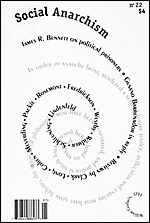Cry of the Invisible
Michael A. Susko gives voices to the people society would prefer to sweep under the rug—psychiatric patients and the homeless. Susko takes a psychosocial approach to mental illness emphasizing situational explanations and childhood trauma. He is adamant in his opposition to drug therapy, even when used in combination with psychotherapy.
He does not deny that problems exist, but what is to be done? For openers, we can start listening to the voices of the forgotten. As an editor, Susko is in a position to make this possible. The stories, poems, and drawings he has selected for this volume speak for themselves. They tell a tale of hopelessness, of lack of control over one's own life, of being on the outside looking in. They show that the seeds of later mental disturbance were planted long before diagnosis and administration of medications, and were fertilized by the psychiatric intervention rather than nipped in the bud.
Psychosocial explanations place the blame neither entirely in the individual psyche nor in the social milieu, but rather in the interaction between the two. These patients are victims of a personal disorganization worsened by often well-meaning doctors and relatives who have little understanding of anyone who is different, who cannot articulate his or her needs in a socially acceptable way, who will not go along with their judgments.
But the issue is not entirely one-sided. Treatment is not always forced on kicking and screaming victims. Most people do not choose to feel bad, to be sick, to freeze to death in a cardboard box under a bridge. There are just not a lot of alternatives, especially with budget cutting, elimination of social services, powerful pharmaceutical companies, and a mindset that stresses neurochemical imbalance rather than spiritual grappling of difficult life situations. Shock treatments (E.C.T.) wipe out thought processes, they do not help them. Drugs do more damage and have more negative effects than therapeutic value. Conflicting diagnoses from professionals only add to the confusion.
The voices in this volume belong to formerly hyperactive children, substance (alcohol, narcotics, cigarettes) abusers, victims of sexual molestation, questers and the delusional. They achieve their goals through calmness and objectivity, sided by positive feedback, feelings of self-worth, autonomy, and social activism. They learn to play the game.
I can personally attest to many of the points Susko makes, having taught painting and arts and crafts in the psychiatric unit of St. Joseph's Hospital in Paterson, New Jersey. I went through a short initiation period during which a rather belligerent teenage patient challenged me to relate what I saw about him from his paintings. I could feel everyone's eyes on me and a collective breath being drawn, so I give it my inexperienced best. After a silent minute, he said that I had gotten it right. I seemed to have broken through to the patient's trust. I was never challenged again.
When someone had shock treatments or had been heavily medicated, others would ask me to leave that person alone because she (in most cases) was spaced out or having memory problems, and I complied. I would assist the music therapist and see patients who were otherwise mute playing instruments and singing. But I would help with outdoor activities and see a side of the patients I was powerless to handle, as if being beyond the locked ward put them in their own territory where they did not have to listen to anyone. In the day room, where the television set was on continuously, there was an aura of staleness and inactivity.
Having been impressed by writer Doris Lessing's views on the spiritual quest of the people whose views clashed with those of the rest of
society, people diagnosed and labeled by psychiatrists, I wanted to find this in the patients. I found instead apathy, confusion, and a lack of self-analysis. But I was dealing with people getting medications and E.C.T., people who knew better than to reveal things to someone who might report back to their doctors.
Dr. Peter R. Breggin writes herein of the brain damage caused by E.C.T. and psychiatric drugs, commenting that social reform and improved human services would make a difference. This leads to a number of questions that a social anarchist might want to ponder. Lots of people do not conform to society's norms, but who is given drug or shock treatments and committed, and who is left alone, told to take a vacation, or given talk therapy?
Obviously, money, color, and gender determine the answer. Money buys health insurance, private treatment, and vacations rather than back wards in state institutions. Men get physical diagnoses; women get psychiatric diagnoses. Dr. Breggin notes that poor black boys are the most likely to be labeled "genetically and biologically defective, and suitable for psychiatric treatment," and that children are blamed "for the problems of parents, families, schools, and society" (p. 316).
Harrison Edward Livingstone, Susko's editor-publisher, points to society's lack of caring "for the people who fall by the wayside, people who don't fit, can't compete, who are sick" (p. 175). It is not just the individual, but the society itself that is diseased.
When Dr. Marcio V. Pinheiro comments that Americans throw out defective products, he is including people — people who are less than perfect. The country's wealth is not going to its needy but rather to the protection of big business and to defense contracts. This was written in 1987. The picture has not changed much. There are still priorities that seem more important than people. The invisible are crying out for help. Will they be heeded, or drugged into conformity? The voices in this volume may stutter at times, but they deserve to be heard. Michael Susko is to be commended for his effort to make this possible.

